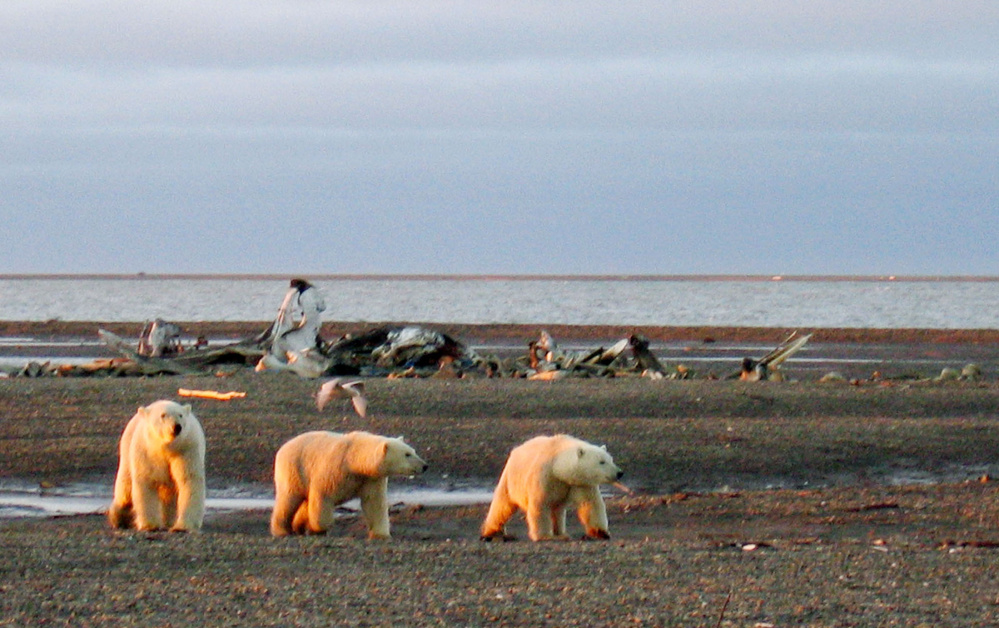SEATTLE — Amid the fierce partisan politics that dominate Congress, Alaska Republican Sen. Lisa Murkowski and Washington Democratic Sen. Maria Cantwell have displayed a rare ability to find common ground.
For more than a year, they labored to piece together an energy bill that sailed through the Senate before foundering in the final days of this session.
Next year, though, the two will be on opposite sides of a great policy divide, as Congress again considers whether to open the coastal plain of the Arctic National Wildlife Refuge to oil exploration or continue to protect an area conservationists view as a crown jewel of public lands.
The old fight is back, and fresh, because of the presidential election victory of Donald Trump, who will preside over a Republican-controlled Congress.
In his campaign, Trump advocated boosting U.S. oil production as he spurned the science linking climate change to fossil fuel combustion, all of this whipping up hopes among his industry supporters.
He would be expected to embrace any legislation to drill in the refuge that makes it through Congress.
The oil Cabinet
And, his executive choices such as Oklahoma Attorney General Scott Pruitt – an ally of the fossil fuel industry nominated to lead the Environmental Protection Agency – will try to pare back federal regulations to speed energy development.
For Alaska politicians, the decades-long quest to open the 1.5 million-acre coastal plain to drilling has been as elusive as finding the Holy Grail. It now takes on new urgency as the state economy is shaken by low oil prices and a steep decline in crude flowing through the Trans-Alaska Pipeline.
Murkowski, as chairwoman of the Senate Energy and Natural Resources Committee, sits in a powerful position to renew the political fight.
During her nearly 16 years as Washington’s junior senator, Cantwell has made protecting ANWR a signature environmental cause – successfully fending off a push to allow exploration in a bitter 2005 Senate fight. The late Sen. Ted Stevens, R-Alaska, called the measure’s defeat “the saddest day of my life.”
Conservationists view refuge protection as a top priority in 2017, and they look for renewed leadership from Cantwell, the ranking minority member on the Senate energy committee.
The coastal plain by the Beaufort Sea is critical to caribou and other wildlife, and arguments for keeping out the oil industry have an added edge as the Arctic undergoes new stresses from climate change.
“Maria Cantwell, she is an incredible champion on the issue that we care about, whether it is offshore drilling or climate change or protection of public lands,” said Athan Manuel, the Sierra Club’s director of lands protection.
Rosemarie Calabro Tully, a Democratic spokeswoman on the Senate energy committee, said Cantwell has a lot of respect for Murkowski and has found plenty of areas where the senators can work together. But when it comes to the refuge, “neither one is going to change their position.”
An issue since 1980
Congress created the refuge in 1980 as part of sweeping public-lands legislation – signed by President Jimmy Carter – that put conservation protections on more than 100 million federal acres in Alaska.
Lawmakers also recognized the oil potential of the coastal plain, where aboveground seeps can be found. But they prohibited leasing or other development unless authorized by a future Congress.
In the decades that followed, Alaskans joined with the oil industry to make repeated efforts in Congress to open the coastal plain. The votes always fell short.
To date, only one well has been bored within the coastal plain. That was by Chevron and an industry partner, in 1985, on an inholding held by an Alaska Native corporation. The results of that drilling remain one of the U.S. oil industry’s most tightly held secrets.
The federal government, through analysis of key sandstone formations, has assessed the oil potential. The U.S. Geological Survey conducted a study of the coastal plain that was submitted to Congress in 1987, and another one in 1998.
The 1998 report found the most likely scenario would be the discovery of 7.7 billion barrels of recoverable oil within the plain. There could be more than that. The report noted a 5 percent possibility of as much as 11.8 billion barrels, an amount that, if pumped over time, would rival the total output of the giant Prudhoe Bay oil field during its first 38 years of operation.
The refuge has conventional oil-bearing formations, so any crude found could be tapped with a fraction of the wells that must be drilled to produce from the shale oil rock fields in the Lower 48, according to David Houseknecht, a U.S. Geological Survey geologist who worked on the 1998 study.
Copy the Story LinkSend questions/comments to the editors.



Success. Please wait for the page to reload. If the page does not reload within 5 seconds, please refresh the page.
Enter your email and password to access comments.
Hi, to comment on stories you must . This profile is in addition to your subscription and website login.
Already have a commenting profile? .
Invalid username/password.
Please check your email to confirm and complete your registration.
Only subscribers are eligible to post comments. Please subscribe or login first for digital access. Here’s why.
Use the form below to reset your password. When you've submitted your account email, we will send an email with a reset code.